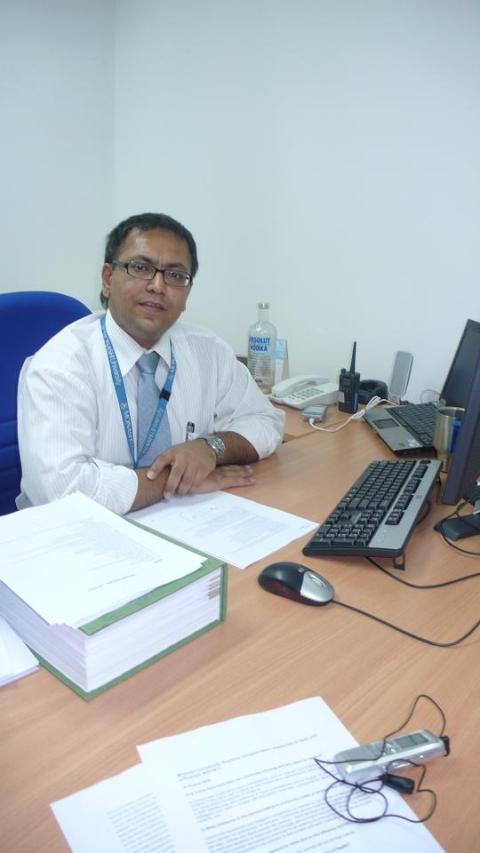H1N1 at Monash Sunway Campus
Posted on: October 14, 2009
by: Neneng Retna Kurnia
Monash Sunway Campus, the latest update of H1N1 is receding.
Jasbir Singh, Risk Manager of OHS (Occupational Health and Safety Department) says the H1N1 flu is not really a serious problem at the Monash Sunway Campus anymore.

Jasbir Singh in his office
Within Monash, a student and a member of staff were reported to have contracted the virus this August. They have since recovered while Monash officials have quarantined all the students who were in the same classes, and the colleagues who were in contact with the staff. Singh confirms that none of them have come down with the virus.
Since the nationwide outbreak, Monash has been following the Ministry of Health’s guidelines.
Measures include mass communication modes such as broadcasting emails, putting information on the web, notices and signs around the campus. OHS has also been distributing hand sanitizers and face masks.
Moreover, an emergency hotline has been set up for H1N1 related enquires and emergency help. Monash will provide assistance for students and staffs who need help. Singh says, “Monash students are never alone”.
Compulsory temperature scanning at every entrance has also been set up to detect any signs of fever. This action is very useful in some points for precautionary, for both students and staffs.
In addition, Yeong Yung Lin, a Science student and President of MUSA (Monash University Student Association), says that there is only minimum concern of H1N1 in Monash population. He thinks that H1N1 is more rampant on children and old people.
Lin says that MUSA has also contributed to help OHS in spreading out the information to students. Other preventive measures that MUSA supported are disinfecting places in the campus, and distributing face mask and hand sanitizers which is from OHS.
Lin believes that the mass emails have been useful to students, “but whether the students are following the procedures or not is uncertain”. He also says that the temperature scanning has not really been effective, but what Monash has done in practicing personal hygiene is good.
While the effectiveness of the scanners is debatable, Singh asserts what Monash is doing to manage this pandemic is effective for the Monash community.
Singh says the cleaning crews have started using special chemicals to cleanse counter tops, door handles, lift buttons, and any other things people might touch often. They cleanse twice a day. Filters have also been inserted into air conditioners for cleaner air. “That’s the best we can do,” Singh says.
However, one of the local media has pointed out differences between the symptoms of H1N1 and common cold. Common cold rarely comes with headache while H1N1 prominently comes with headache. Fatigue is very mild for common cold, while for H1N1, fatigue can last up 2-3 weeks. Importantly, common cold rarely also comes with fever, but H1N1 characteristically has high fever at (38° C) lasts 3-4 days.
The Government and media in Malaysia too have reported that H1N1 cases have dropped and there are no new reported death cases. However, the Government still encourages the public to practice a healthy lifestyle.




Leave a comment